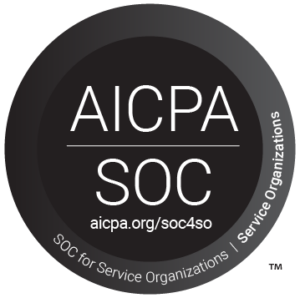SAP High Availability & Disaster Recovery:
Best Practices for Your SAP Landscape
In today’s digital age, where businesses rely heavily on real-time information and continuous operations, maintaining an always-on SAP system is critical for success. Even brief periods of downtime can cause significant disruptions, leading to:
- Lost revenue: Every minute of downtime translates to lost revenue, especially for businesses that rely on e-commerce or real-time transactions.
- Reduced productivity: Downtime hinders employees’ ability to access and utilize crucial data and applications, impacting productivity and workflow efficiency.
- Damaged customer satisfaction: Downtime disrupts customer experiences, leading to frustration and potentially damaging your brand reputation.
“In today’s digital world, downtime is not an option. High availability and disaster recovery are essential for any organization that relies on SAP systems.”
Implementing high availability (HA) and disaster recovery (DR) strategies are essential for ensuring business continuity. They offer a proactive approach to mitigating the impact of unexpected events, such as:
- Hardware failures: Equipment malfunctions or infrastructure outages can lead to system downtime.
- Software errors: Bugs, glitches, or security breaches can disrupt system functionality.
- Natural disasters: Events like floods, earthquakes, or power outages can cause physical damage or connectivity disruptions.
- Cyberattacks: Malicious actors can launch cyberattacks, attempting to compromise data or disrupt operations.
1st Basis Consulting, a firm with extensive expertise in HA and DR solutions, understands the importance of these safeguards. In this blog, we’ll delve deeper into best practices for setting up a robust HA and DR strategy for your SAP landscape:
1. Define Your Business Requirements:
The foundation of any effective HA and DR plan lies in understanding your specific business needs. This involves defining two critical metrics:
- Recovery Time Objective (RTO): This defines the maximum acceptable downtime your business can tolerate after a disruptive event. It reflects the urgency of restoring system functionality and minimizing business impact.
- Recovery Point Objective (RPO): This determines the acceptable amount of data loss you can tolerate between the last successful backup and the occurrence of a disruption. It defines the level of data protection and recovery granularity required.
By clearly defining your RTO and RPO, you can guide your selection of appropriate HA and DR solutions that align with your business priorities and tolerance levels.
2. Implement High Availability:
High availability focuses on minimizing downtime by ensuring continuous system accessibility even when hardware or software failures occur. Here are two key strategies to achieve high availability:
- Clustering: This involves deploying a clustered server environment where multiple servers act as a single unit. If the primary server encounters issues, the cluster automatically fails over to a secondary server, ensuring seamless continuation of operations.
- Load Balancing: Distributing workload across multiple servers not only improves overall system performance but also prevents a single point of failure. By distributing traffic among multiple servers, even if one server encounters problems, the others can continue processing requests, minimizing service disruptions.
3. Establish Disaster Recovery:
Disaster recovery goes beyond addressing individual server or software failures and focuses on resilience against large-scale events that could severely disrupt or even completely disable your primary data center. Here are two essential elements of a robust DR strategy:
- Data Backup & Replication: Regularly backing up your critical SAP data is crucial. However, simply creating backups is not enough. Implementing data replication involves copying and maintaining a duplicate copy of your data at a geographically separate location. This ensures data availability even if the primary location becomes inaccessible due to a disaster.
- DR Site: Setting up a secondary DR site located in a physically separate location from your primary data center provides an additional layer of protection. This site should mirror your production environment, including hardware, software, and data, enabling rapid system restoration and resuming operations in case of a major disruption at the primary site.
4. Automation & Monitoring:
Automation and monitoring play critical roles in ensuring the effectiveness and efficiency of your HA and DR solutions:
- Automate failover processes: By automating failover procedures, you can ensure swift system recovery in case of failures. This minimizes human intervention during critical situations and reduces the risk of errors.
- Implement robust monitoring tools: Continuously monitor your system health and performance using comprehensive monitoring tools. These tools can help you proactively identify potential issues before they escalate into major disruptions, allowing for timely intervention and preventive measures.
5. Testing & Practice:
Regularly testing your HA and DR plans is crucial for validating their effectiveness and identifying areas for improvement. Here are two key aspects of ensuring your plans are ready for any eventuality:
- Conduct regular tests and simulations: Simulate real-world scenarios like hardware failures, power outages, and cyberattacks to test your failover and recovery procedures. These simulations help you identify potential bottlenecks, refine your response strategies, and ensure all involved personnel are familiar with their roles and responsibilities.
- Train your IT team: Provide comprehensive training to your IT team on the implemented HA and DR solutions. This training should cover both theoretical knowledge and practical skills, ensuring they understand the procedures and can respond effectively in the event of an emergency.
By employing these best practices, you can build a robust and comprehensive HA and DR strategy for your SAP landscape. This proactive approach will minimize downtime, safeguard your critical data, and ensure business continuity even in the face of unexpected disruptions.
1st Basis Consulting offers extensive expertise in implementing and managing HA and DR solutions for SAP systems. We can help you:
- Assess your specific business needs and requirements
- Design a tailored HA and DR strategy aligned with your RTO and RPO
- Implement and configure the chosen solutions
- Provide ongoing support and maintenance
Contact 1st Basis Consulting today for a free consultation to discuss your specific requirements and build a secure and resilient SAP environment that empowers your business to thrive in today’s ever-evolving landscape.







